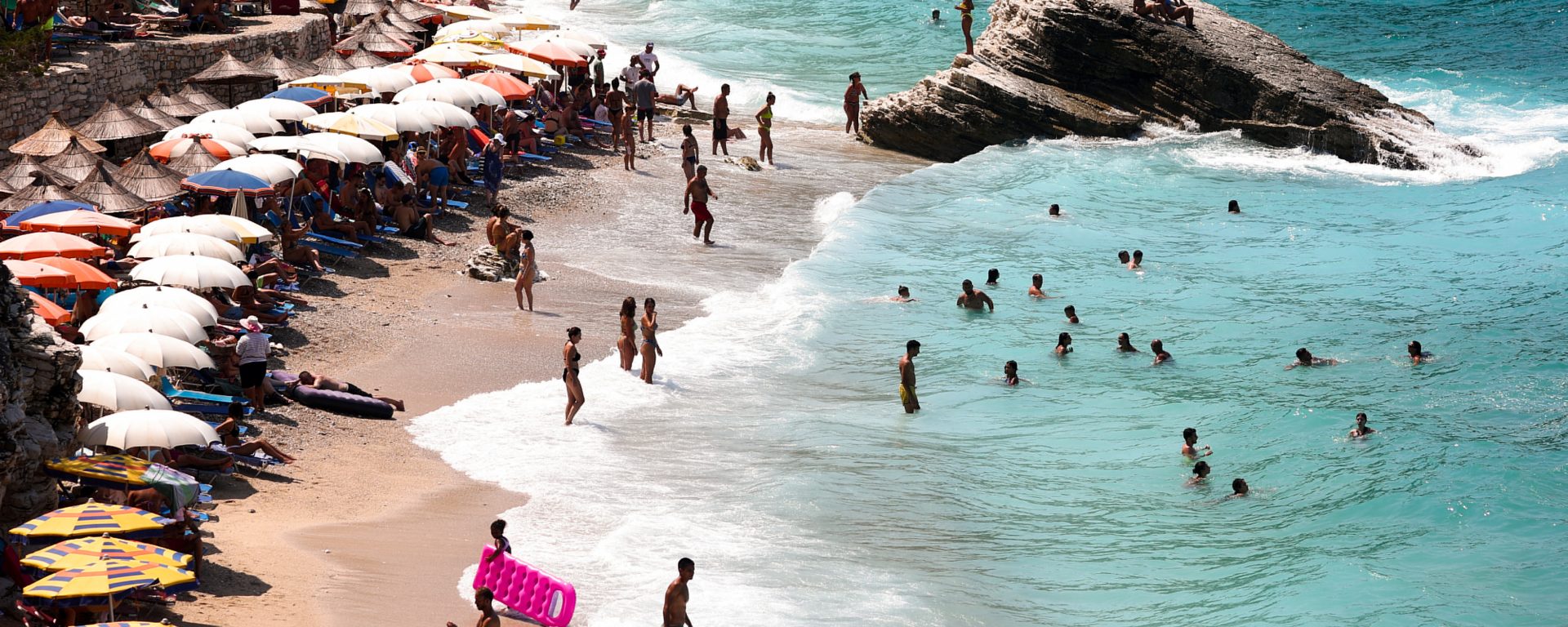Albania’s tourism landscape is undergoing a reconfiguration, driven by surging German and French tourists. In the latest release, the Institute of Statistics (INSTAT) disclosed that German arrivals to Albania for the January-to-July 2025 period reached 231,000, a robust expansion of 28 per cent over the same interval in 2024. The French market, in turn, recorded an even steeper trajectory, contributing 160,000 visitors—an acceleration of 48 per cent that translates into the highest absolute tally yet recorded.
This pronounced enrichment of the visitor portfolio is exerting discernible influence upon Albania’s spatial tourism dynamics, with both the capital and the principal coastal corridor manifesting distinct adjustment responses. Tirana, in particular, reports intensified occupancy and ancillary consumer activity in summer, while both Durres and Saranda are experiencing faster investment in German- and French-language hospitality and excursion offerings. In stark contrast, Italy, traditionally the dominant source, is encountering comparatively anemic expansion; Naples, via the Adriatic ferry lanes, and Rome charter services have produced arrivals of just over 200,000—an increment of 7 per cent representative of 2025, markedly lagging the surge rates being attained by the German and French contingents.
Rising Popularity of German and French Tourists in Albania
Emerging tourism patterns in Albania reveal growing German and French visitation across the nation’s capitals and its southern coastline. Tirana, the capital, and the Albanian Riviera, stretching from Dhermi through Vlorë to Saranda, have welcomed record arrivals. Younger, independent French and German travelers are drawn by the picturesque landscapes, rich cultural heritage, and well-preserved historical sites, fueling a continued upward trajectory in transitory flows from these markets.
Observational data from Albanian incoming operators indicate the gradual expansion of visitor numbers is more than a seasonal anomalous spike; rather, German and French patterns show fundamentals sufficient to sustain medium- to long-term growth. Industry pre- and post-COVID survey results attribute the uptick to Albania’s emergent standing as an economical yet distinctive Mediterranean option, concomitant with a diversification of offerings that encompass active, cultural, and nature-focused programs.
Particularly noteworthy, the French segment has overtaken other European markets in relative growth, ranking as one of Albania’s swiftest inbound origins. Statistical and qualitative assessments attribute momentum to a series of interlocking variables: the multiplication of dedicated air linkage from key French regional and national ports; the consolidation of Albania’s identity as an attractive, reasonably priced option; and a concurrent, incremental scaling of lodging, hospitality, and logistical infrastructure oriented to multi-strata preferences.
Italian arrivals in Albania have decelerated in 2025, but the market remains the second-largest, trailing only Kosovar nationals. Year-to-date figures indicate inbound traffic from Italy expanded by 7% from January to July, an acceleration well below the prior compound annual growth rate of 4.5%. Consequently, operators examining future bookings are cautious, viewing this deceleration as less cyclical and more structural in character.
The predisposition of Italians to the Albanian market originated in its adjacency and shared heritage. Italian travelers gravitate toward Albanian seascapes evoking the lower Tyrrhenian and archaeological landmarks bearing classical inscriptions. Nonetheless, an expansion of dispersed acton and outlying Bulgarian competitors, combined with the rise of price-driven travelers catalyzed by strengthened low-cost carriers, appear to have eroded the Algerian market’s historic café-culture allure to Italy.
Preliminary behavioral surveys conducted by Italian wholesalers and Albanian counterparts show an increasing propensity of long-haul bookings and a concentration of repeat travelers toward established Mediterranean coastlines. In parallel, Ministry of Tourism’s 2025 marketing strategy deliberations emphasize broader pivot to the Mediterranean subregion, the construction of thematic pensions, and the sustained promotion of Albanian hike and farm itineraries.
A Changing Tourism Landscape in Albania
Albania’s evolving visitor profile signals a more extensive transformation of its national tourism tableau. German and French arrivals are growing in relative importance, prompting concerted responses to harmonise host offerings and expectations. The response centres on targeted upgrades to transport linkages, accommodation stock, and experiential provisioning, with a strong emphasis on culturally anchored itineraries, all-inclusive beach retreats, and activity-rich circuits through the Llogara Pass and the Accursed Mountains.
Albania’s Tourism Growth Strategies Moving Forward
In parallel, the Ministry of Tourism is amplifying promotional narratives to reposition Albania as a year-round, multisectoral destination. Holistic emphasis is placed on programmes that integrate ecotourism and heritage tourism, measures supported by complementary state-led investments in expanded routing and frequency of air connections, particularly with strategic European nodes. Concurrent promotional streams oriented toward millennial and solo travellers, demographic segments that correspond closely with German and French arrivals, emphasise the region’s cost advantage, dramatic geomorphology, and the region’s renowned warmth.
Forecast: Italian Market Will Remain Cornerstone for Albanian Tourism
Though growth in the Italian tourist segment has moderated, Italy endures as one of Albania’s premier source markets. Generations of shared history and cultural kinship ensure that Italian travellers continue to play a defining role. The Albanian National Tourism Agency has therefore resolved to refine its outreach, delivering curated packages that spotlight the country’s archaeological landmarks, its spectacular coastline, and the steadily maturing travel infrastructure.
Broadly, as Albania consolidates its position as a tourism destination, the German and French markets are expected to catalyse an acceleration of growth, yet the Italian segment will retain its relative strength. Visitor statistics may incur moderate annual oscillations, yet the Italian visitor base remains embedded in the wider strategic vision of the Albanian tourism sector.

